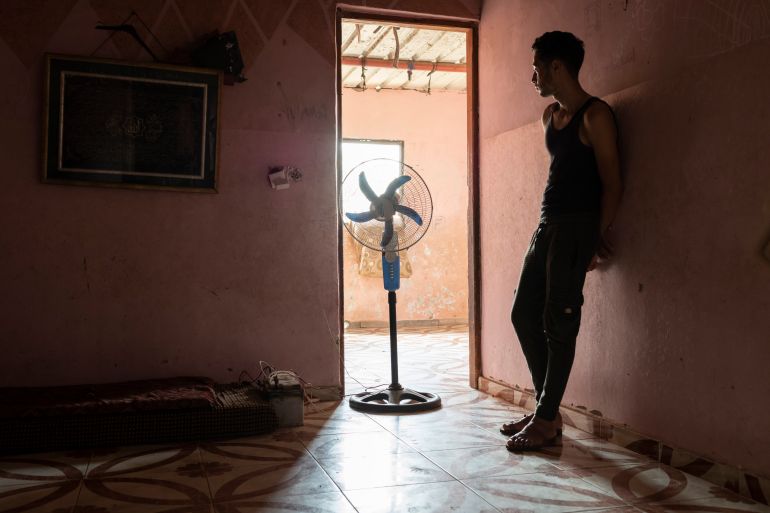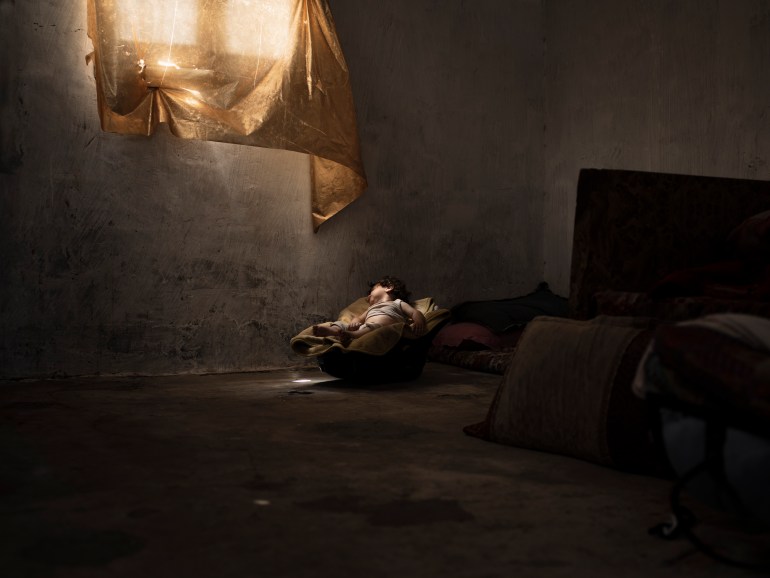Why Israel’s ban on fuel to Gaza isn’t about stopping Hamas
Israel says Gaza can’t have fuel because it has military uses. But the monitored delivery system is tamper-proof, so why refuse?

Amman, Jordan – At dawn on Tuesday morning, the Indonesian Hospital in Beit Lahia, northern Gaza Strip, had run out of diesel to power its generators.
For more than two weeks, nothing had been allowed into the Gaza Strip; no food, water or fuel.
Keep reading
list of 4 itemsRepublicans in US House pass bill pushing Biden to send weapons to Israel
‘Gaza largely wiped off the map’: Israel reinforces Rafah ground invasion
Pro-Israel billionaires urged New York crackdown on Gaza protests: Report
In the past three days, Israel has allowed very few aid trucks in via the Rafah land crossing with Egypt. But no fuel – so far, the request for fuel to enter Gaza for humanitarian needs has been declined by Israel.
Israel classed diesel as a “dual use” good that can be used for military as well as civilian purposes. Therefore, it is heavily controlled or restricted.
However, Israel wrote the rule book on “kosher fuel” for Gaza, a highly complex system of approvals and monitoring put in place to guarantee that “civilian use” fuel flows only to Gaza’s sole power plant.
Siege
The Strip is under siege and constant aerial bombardment by Israel following a surprise attack by the armed wing of Hamas on Israeli territory on October 7, during which 1,405 soldiers and civilians were killed.

By the time the Indonesian Hospital went dark, medical teams across the Gaza Strip had already been using the glow from their mobile phones to perform some procedures for days, to conserve what energy their various hospitals had to run respirators and other machines keeping some of the patients alive.
According to the Palestinian Ministry of Health, the aerial assault on Gaza by the Israeli army has killed 5,791 Palestinians and injured a staggering 16,297, many of whom require hospital treatment.
That is in addition to the patients with chronic conditions and those who were already being treated in a healthcare sector that has long teetered near collapse.
For years, the United Nations has warned that Gaza is on life support, as the situation deteriorated. After 14 days of Israel’s “complete siege”, its 2.3 million residents are staring into the abyss.
“The whole aid operation will come to a halt if fuel is not permitted to enter the besieged enclave. Hospital generators, water desalination plants and trucks to redistribute food and medical supplies – all stops,” Thomas White, head of the United Nations Relief and Works Agency (UNRWA) in Gaza, told Al Jazeera from their logistics base in Rafah.
“[F]uel is vital for life and we [UNRWA] will run out of fuel for Gaza on Wednesday, that’s it.”
White’s stark warning comes at a time when at least 10 of Gaza’s 35 hospitals are out of service, either due to heavy damage from Israel’s near-constant bombardment of the Strip or a lack of the fuel needed to generate electricity.
‘Kosher fuel’
Gaza’s power plant was targeted by Israeli air raids in two previous conflicts – 2006 and 2014 – deliberate attacks on a civilian object that are forbidden under international humanitarian law and considered a war crime.
The repercussions of these premeditated attacks hamstrung Gaza’s efforts to meet the daily electricity demand in the Strip even prior to the current conflict, which was estimated at about 500MW.
Electricity to Gaza comes from two sources: 120MW from Israel, which was withdrawn by Israel’s Minister of Defence Yoav Gallant on October 9, and an additional 70MW from the Gaza power plant, which ran out of fuel on October 11 and subsequently shut down, leaving people and hospitals relying on generators and fast-dwindling supplies of fuel.
Nothing can enter Gaza without the express permission of Israel and fuel is heavily monitored by Israel’s Coordinator of Government Activities in the Territories (COGAT) and the UN Office for the Coordination of Humanitarian Affairs (UNOCHA).
Once a fuel delivery crosses Rafah into Gaza, truck drivers are on the clock, and not permitted to make any stops, for any reason. Any abnormalities are reported back via UN officials to all parties, including COGAT.

Once the vehicle arrives at the power plant, the blue plastic numbered UNOPS security tags sealing the fuel delivery couplings must be cut under the watchful eye of a UN inspector and cross-matched on an electronic list, vetted by Israel.
Israel has the mechanisms in place to allow fuel to be delivered to Gaza. But perhaps this is less about ability and more about desire, or lack thereof.
Reservist Major General Giora Eiland told Israeli media on Monday that Israel’s actions in “creating a severe humanitarian crisis is a necessary means to achieve the goal. Gaza will become a place where no human being can exist.”
According to the World Health Organization (WHO), the fuel shortage is affecting the most critical functions of the still-operational hospitals in Gaza, including powering ambulances to transport the wounded and running dialysis machines that more than 1,000 patients depend on.
Living by the finest of margins
Since 2007, Gaza’s residents have endured no fewer than five conflicts that killed thousands of civilians and damaged vital infrastructure. They have lived by the finest of margins for years.

Before the current assault on the enclave, the land, sea and air blockade imposed on it by Israel for the past 16 years devastated the economy, which has one of the highest unemployment rates in the world – nearly 50 percent and rising to 70 percent among youth.
It also created one of the worst humanitarian crises of modern times with 81.5 percent of the population now below the poverty line. A sizeable portion of the population needs aid to survive.
“Another major issue [under the current siege] is the current mechanism averaging about 20 trucks of humanitarian aid a day, is nowhere near what we require to sustain the people of Gaza.
“Prior to the conflict, on an ordinary day, 455 trucks were entering Gaza, to support the population,” White said.
Civilians in Gaza, already on their knees, now have only to worry about surviving the day or through the night, convinced that the world has abandoned them to Israel’s assault.
One thing that seems to be certain is if fuel does not enter the enclave – and immediately – hundreds, if not thousands, more people will die.